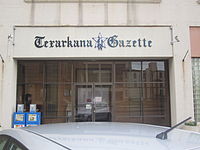Survival Rates Are Up In Area Cardiac Arrests

LifeNet, Inc. recently released its 2016 Annual Report on Out-of-Hospital Cardiac Arrests, a major health problem in the United States.
The emergency medical services corporation saw survival rates increase this year to 23 percent, up from 16 percent in 2015.
"I'm very proud of our efforts to maximize the chances of survival in cardiac arrest. As the report illustrates, we have invested heavily in training and equipment and we will continue to do so," said David Baumgardner, LifeNet director. "I believe the numbers are marginally better. and that's really what you want. We are just making the effort to try and be better."
Throughout the LifeNet service area, which includes Texarkana, Hot Springs and Payne County, there were 846 nontraumatic cardiac arrests.
Resuscitation was attempted on 314, and 72 (23 percent) of those survived to be discharged from the hospital.
In Texarkana, resuscitation was attempted on 128 of the 447 patients who suffered sudden cardiac arrest. Of those patients, 84 were taken to the hospital and 34 patients survived to discharge,for a survival rate of 27 percent. The national average in this overall survival category is 6 to 8 percent.
According to the report, between 300,000 and 400,000 sudden deaths occur annually in the U.S., and approximately two-thirds of these victims are older than 65. Every 29 seconds someone in the U.S. has a heart attack, and every minute someone dies from one. Sudden cardiac arrest is responsible for 30 percent of all nontraumatic deaths and 50 percent of all coronary artery disease-related deaths.
Timely treatment is key to survival.
The likelihood of shocking someone back to a normal heartbeat declines 7 to 10 percent per minute, with an estimated probability of 70 to 80 percent the moment sudden cardiac arrest happens. If someone isn't shocked within 10 minutes of the event, the likelihood they'll survive approaches zero.
There are a couple of things the community can do to help improve survival rates.
"There are two things that make the biggest difference. One of them is the individual person learning CPR," Baumgardner said. "With CPR nowadays, you don't have to mouth-to-mouth anymore. That probably scared some people away from wanting to learn how to do it. It's mainly just hands-on compressions and it makes a huge difference. not only doing it but doing it right."
"The second thing is electricity from an automated external defibrillator. A patient in ventricular fibrillation needs their heart restarted because what's going on is the rhythm is chaotic. It's not able to perfuse blood to the brain. In theory, you fix it by stopping the heart and letting it start again in a perfusing rhythm and the only way to do that is electricity," Baumgardner said. "We want to get those AEDs out there in the community. We encourage businesses and churches to consider purchasing an AED."
"Learn CPR and add an AED to your business. That would have a huge impact and it has had a huge impact. If you look at some of the people resuscitated in the last year it was because somebody did CPR other than us and somebody had an AED other than us or the fire department. It works. The report shows it works," Baumgardner said.
LifeNet has been measuring and reporting sudden cardiac arrest statistics since 2005. The full report is available to the public at Lifenetems.org.
Survival rates for previous years are:
2011—12 percent
2012—17 percent
2013—12 percent
2014—17 percent
2015—16 percent
Story Credit: http://www.texarkanagazette.com/news/texarkana/story/2017/mar/05/survival-rates-are-area-cardiac-arrests/664214/


